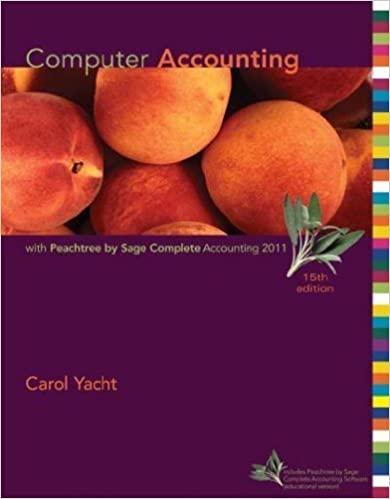Question
Ms. Martha Fleck owns an unincorporated business that she operates out of leased premises. In order to simplify record keeping, her general accounting information is
Ms. Martha Fleck owns an unincorporated business that she operates out of leased premises. In order to simplify record keeping, her general accounting information is the same as that which she uses for tax purposes. On December 31, 2019, the business has the following assets and liabilities.
Tax Value Fair Market Value Accounts Receivable $132,000 $ 127,500 Inventory 261,000 312,000 Equipment (Cost = $420,000) 351,000 475,500 Goodwill Nil 525,000 Total Assets $744,000 $1,440,000 Liabilities ( 142,500) ( 142,500) Net Assets $601,500 $ 1,297,500 All of the assets of the unincorporated business will be transferred to Rollex Inc., a new corporation established for the purpose of this transfer. The accounts receivable have a face value of $132,000 and will be transferred using the ITA 22 joint election. The remaining assets will be transferred under the provisions of ITA 85(1). The total consideration received by Ms. Fleck will have a value of $1,312,500 ($1,440,000 - $127,500), the fair market value of the assets other than accounts receivable. The consideration is made up of new debt of $112,500, assumption of the old debt of $142,500, preferred stock with a fair market value of $337,500, and common stock with a fair market value of $720,000. The new corporation does not have a balance in its General Rate Income Pool (GRIP) account in any of the years under consideration. Ms. Fleck wishes to incorporate her business in a manner that minimizes or eliminates any tax effects resulting from the transaction. Required: Ignore the lifetime capital gains deduction in your solution. A. Do you agree with the decision to transfer the accounts receivable using ITA 22? Explain your conclusion and determine the tax consequences of this decision. B. Given that Ms. Fleck wishes to minimize or eliminate current taxes, indicate the values that should be elected for each of the assets to be transferred. C. Determine the adjusted cost base of the debt, preferred stock, and common stock that would be received by Ms. Fleck on the rollover.
Determine the Paid Up Capital of the common stock and preferred stock that were issued by the new corporation to Ms. Fleck. E. Determine the tax consequences to Ms. Fleck if the preferred and common stock that she received in the rollover were immediately redeemed in January 2020 by the new corporation at fair market values.
Step by Step Solution
There are 3 Steps involved in it
Step: 1

Get Instant Access to Expert-Tailored Solutions
See step-by-step solutions with expert insights and AI powered tools for academic success
Step: 2

Step: 3

Ace Your Homework with AI
Get the answers you need in no time with our AI-driven, step-by-step assistance
Get Started


